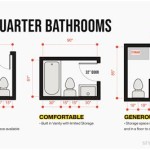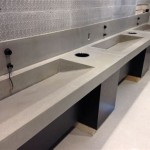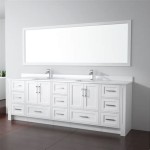Bathroom Vanity Meaning in Spanish
Understanding the nuances of language across cultures is crucial for effective communication. This article explores the translation of "bathroom vanity" into Spanish, providing insight into various regional variations and their contextual appropriateness.
A direct, literal translation of "bathroom vanity" doesn't exist in Spanish. The English term encompasses both the functional cabinet and the countertop basin, often including the mirror and lighting. Therefore, translating requires considering the specific aspect being referenced.
One common way to refer to the entire vanity unit is "mueble de baño." This translates literally to "bathroom furniture" and is widely understood across Spanish-speaking regions. It encompasses the entire structure, including the cabinet, countertop, and sink. While not as specific as "bathroom vanity," it effectively communicates the general concept.
For situations requiring a more precise translation of the countertop and basin, "lavabo" is a suitable option. "Lavabo" refers specifically to the washbasin and, by extension, can also encompass the countertop area immediately surrounding it. This term is widely recognized and understood in Spain and Latin America.
Another term frequently used, especially in Latin America, is "tocador." While "tocador" traditionally refers to a dressing table, it's often used colloquially to refer to a bathroom vanity, especially those with a larger countertop space and integrated mirror. This usage leverages the shared characteristics of both furniture pieces, namely the presence of a mirror and a surface for personal grooming.
The word "vanidad" itself, a direct cognate of the English "vanity," is rarely used in Spanish to refer to bathroom furniture. While understood by Spanish speakers familiar with English, its usage in this context sounds unnatural and is generally avoided. Using "vanidad" might lead to confusion or be interpreted literally as referring to the abstract concept of vanity or pride.
When discussing the mirror component of the vanity, "espejo de baño" (bathroom mirror) is the most common and straightforward translation. It clearly and accurately conveys the intended meaning without ambiguity.
The cabinet portion of the vanity can be referred to as "gabinete de baño" (bathroom cabinet). This term specifically denotes the storage space within the vanity unit and is universally understood across different Spanish-speaking regions. It allows for clear communication when focusing on the storage aspect of the furniture.
Regional variations play a significant role in the choice of appropriate translation. While "mueble de baño" and "lavabo" are generally understood across the Spanish-speaking world, terms like "tocador" might have stronger regional associations. Therefore, considering the target audience is crucial for effective communication.
Context also plays a vital role in selecting the correct translation. For example, when discussing the overall design of a bathroom, "mueble de baño" is an appropriate choice. However, if the focus is on the functionality of the sink, "lavabo" might be more suitable. Similarly, when discussing the storage space, "gabinete de baño" offers a precise translation.
When purchasing bathroom fixtures in a Spanish-speaking country, using more general terms like "mueble de baño" or "lavabo" is usually sufficient. Salespeople in specialized stores readily understand these terms and can assist with finding the appropriate products.
In architectural or interior design contexts, more precise terminology might be necessary. Utilizing terms like "gabinete de baño," "espejo de baño," and "lavabo" ensures clear communication of specific design elements and avoids potential misunderstandings.
For online searches related to bathroom vanities, using various keywords can improve search results. Combining terms like "mueble de baño," "lavabo," "espejo de baño," and potentially region-specific terms can yield a wider range of relevant results.
Furthermore, including descriptive terms related to materials, styles, or specific features can refine search results and help locate specific products or information. For instance, adding terms like "moderno" (modern), "rústico" (rustic), "de madera" (wooden), or "con encimera de mármol" (with marble countertop) can significantly narrow down the search.
Understanding the nuances of translating "bathroom vanity" into Spanish requires considering the specific context, regional variations, and the desired level of precision. Utilizing a combination of appropriate terms and descriptors allows for clear and effective communication in various situations, from casual conversations to professional settings.
Choosing the appropriate translation enhances clarity and ensures accurate comprehension, facilitating effective communication and understanding across linguistic and cultural boundaries.

Spanish Words For Bathroom And Components Infographic
What Is The Meaning Of Bathroom Vanity Question About English Us Hinative

10 Bathroom Vanity Features Pros Always Recommend

What To Consider When Choosing A Bathroom Vanity

Transitional Bathrooms Pictures Ideas Tips From

How To Choose The Best Stone Bathroom Vanity Top Made In

Colonial Bathrooms Pictures Ideas Tips From

Varaluz Nevis Gold Three Light Bath Vanity 360b03fg In 2024 Lighting

Bathroom Design Home Bunch Interior Ideas

Spa Inspired Bathrooms Are En Vogue
Related Posts







